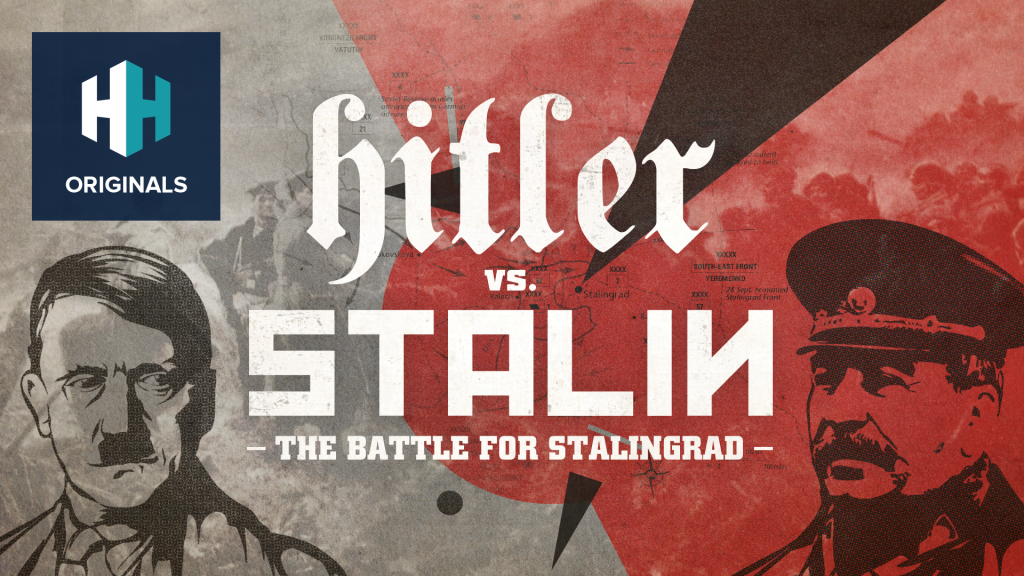Immortalised by numerous films, including the star-studded thriller Enemy at the Gates, the Battle of Stalingrad was one of the most decisive clashes of the Eastern Front in World War Two and ended in a catastrophic defeat for the Nazis. Here are 10 facts about it.
1. It was sparked by a German offensive to capture Stalingrad
The Nazis launched their campaign to capture the south-west Russian city – which bore the name of Soviet leader Joseph Stalin – on 23 August 1942. It was part of a wider German campaign that summer to destroy what was left of the Soviet Army and to ultimately gain control of the Caucasus oilfields.
2. Hitler personally added the capture of Stalingrad to the summer campaign’s objectives
 Watch Now
Watch NowExactly a month before the Germans launched the Stalingrad offensive, the Nazi leader rewrote the objectives of the summer campaign, expanding them to include the occupation of Stalin’s namesake city. The Germans wanted to destroy the city’s industrial capacity and also disrupt the Volga river on which it sat.
3. Stalin demanded that the city be defended at all costs
With the Volga river a key route from the Caucasus and the Caspian Sea to central Russia, Stalingrad (today named “Volgograd”) was strategically important and every available soldier and civilian was mobilised to defend it.
The fact that it was named after the Soviet leader himself also made the city important to both sides in terms of its propaganda value. Hitler even said that, if captured, all of Stalingrad’s men would be killed and its women and children deported.
4. Much of the city was reduced to rubble by Luftwaffe bombing

Smoke is seen over Stalingrad city centre following Luftwaffe bombing in August 1942. Credit: Bundesarchiv, Bild 183-B22081 / CC-BY-SA 3.0
This bombing took place in the early stages of the battle, and was then followed by months of street fighting amid the city’s ruins.
5. It was the largest single battle of World War Two – and possibly in the history of warfare
Both sides poured reinforcements into the city, with nearly 2.2 million people taking part in total.
6. By October, most of the city was in German hands

German soldiers clear a street in Stalingrad in October 1942. Credit: Bundesarchiv, Bild 183-B22478 / Rothkopf / CC-BY-SA 3.0
The Soviets kept control of areas along the Volga’s banks, however, which allowed them to transport supplies across. Meanwhile, Soviet General Georgi Zhukov was gathering new forces on either side of the city in preparation for an assault.
7. Zhukov’s assault proved a success
The general’s two-pronged attack, which launched on 23 November, overran the weaker Romanian and Hungarian Axis armies that were protecting the stronger German 6th Army. This cut the 6th Army off without protection, and left it encircled on all sides by the Soviets.
 Watch Now
Watch Now8. Hitler forbade the German army from breaking out
The 6th Army managed to hold out until February of the following year, at which point it surrendered. The German death toll stood at half a million by the end of the battle, with another 91,000 troops taken prisoner.

A Soviet soldier waves the Red Banner over the central plaza of Stalingrad in 1943. Credit: Bundesarchiv, Bild 183-W0506-316 / Georgii Zelma [1] / CC-BY-SA 3.0
9. The German defeat had a knock-on effect on the Western Front
Due to the heavy German losses at Stalingrad, the Nazis withdrew large numbers of men from the Western Front in order to replenish its forces in the east.
10. It is thought to be the bloodiest battle of both World War Two and warfare in general
Between 1.8 and 2 million people are estimated to have been killed, wounded or captured.















